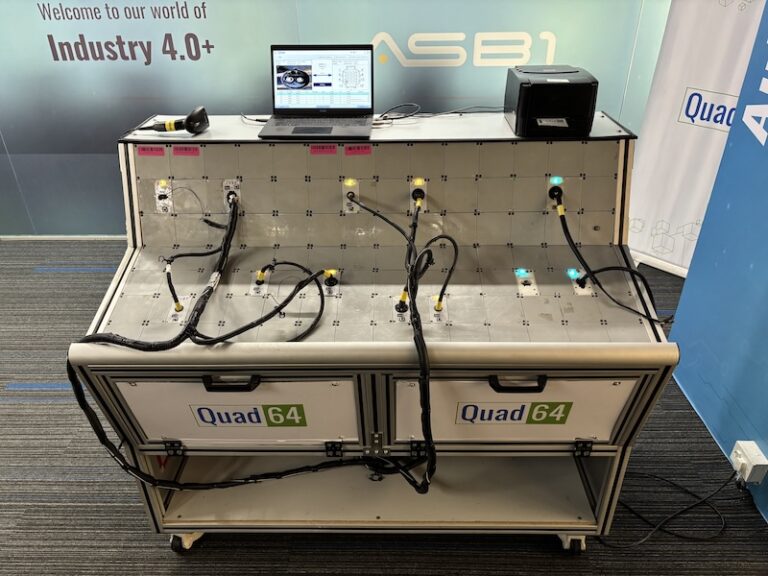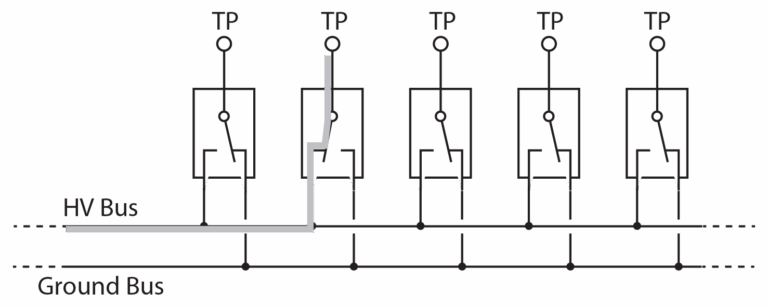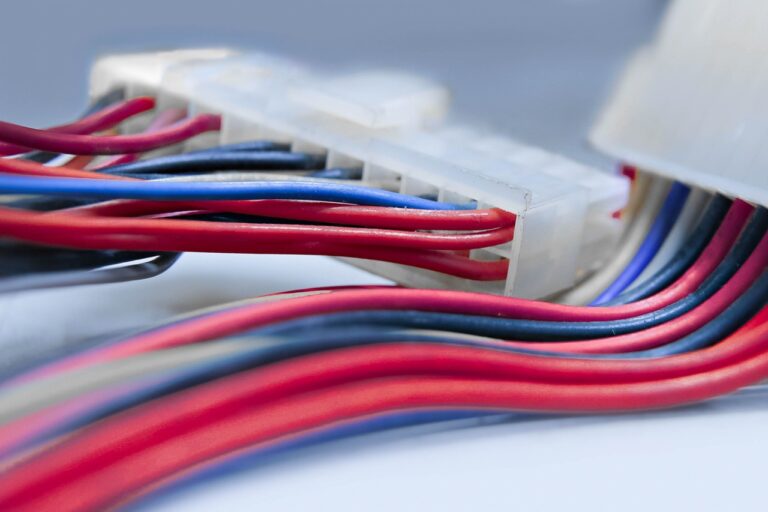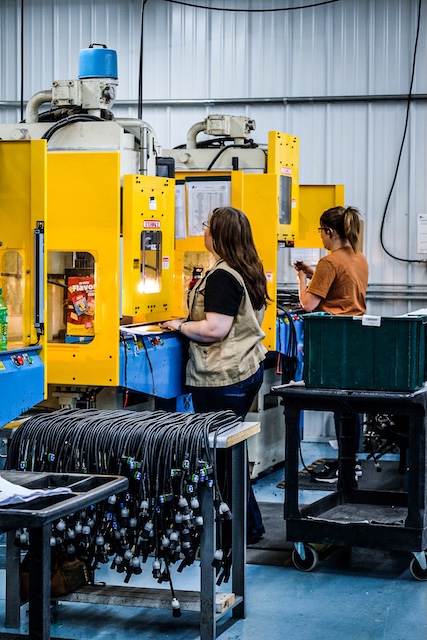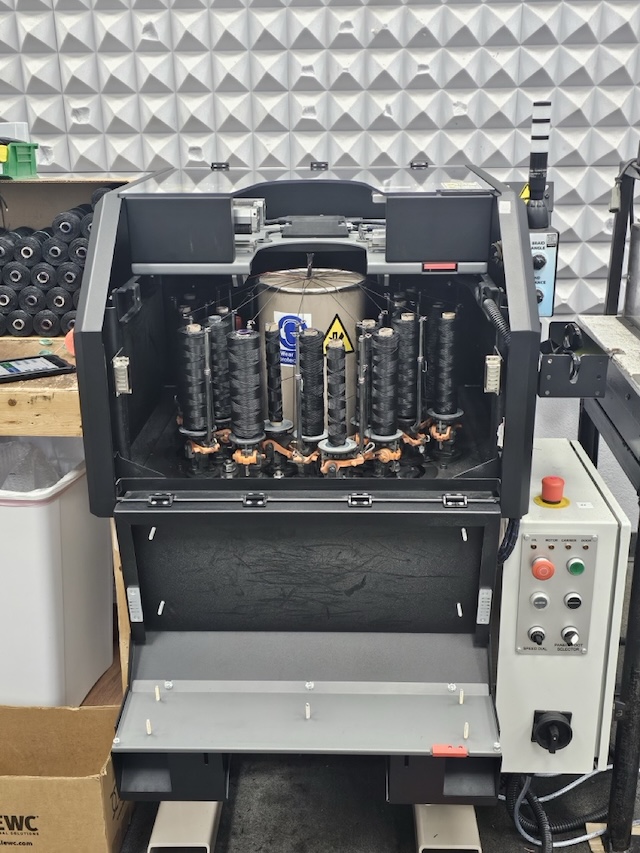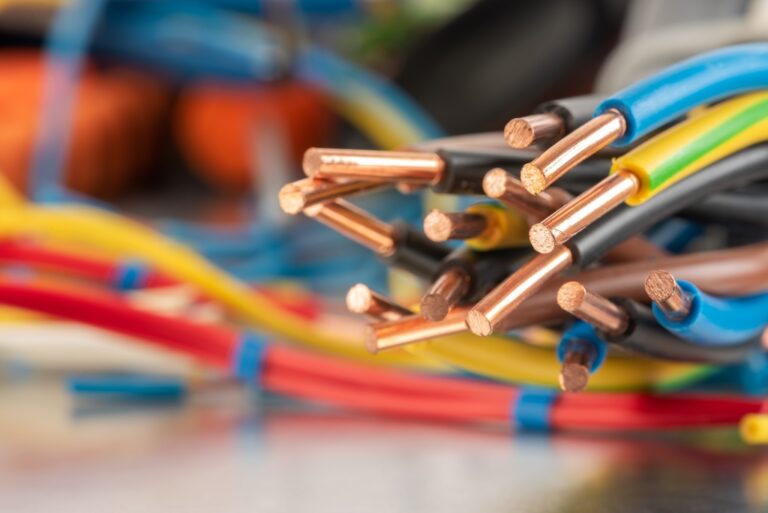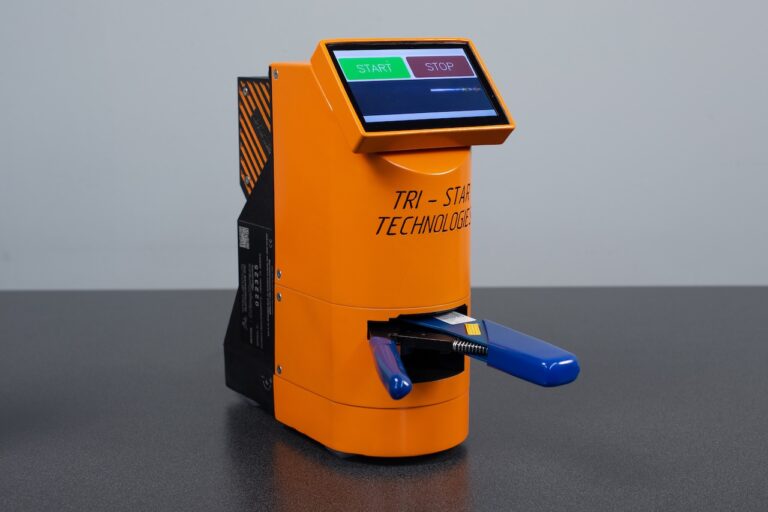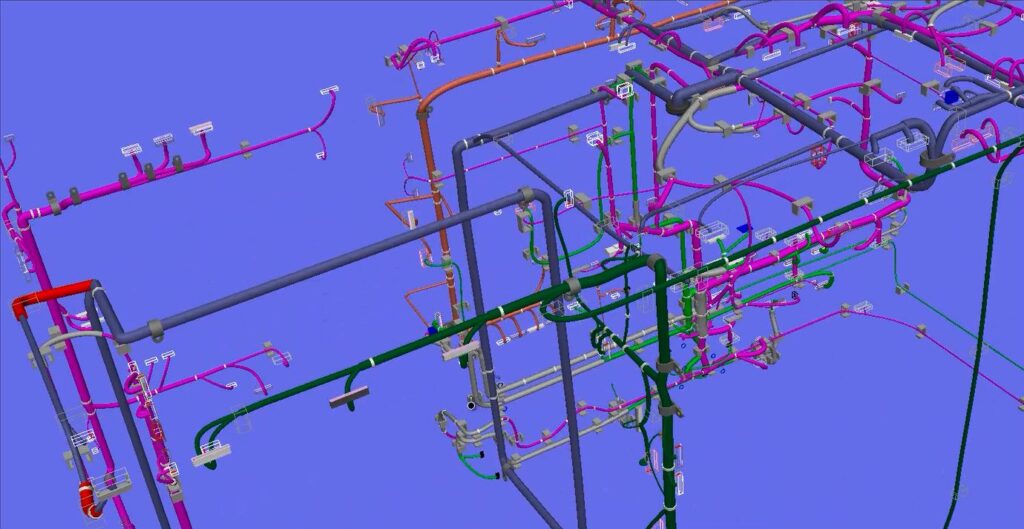Why Don’t OEMs Involve You in Their Design?
(Explained from the perspective of an OEM product development engineer)
by Ted Young, CABLE-I-E LLC
Well, it is a matter of timing.
As you probably know, an original equipment manufacturer’s (OEM) development team is tasked with transforming a new product’s requirements into a detailed product design with drawings that can be manufactured. It’s done by using software specifically made for this purpose. Mechanical components and assemblies are designed in 3D computer aided design (CAD) modeling software. Printed circuit board (PCB) assemblies are detail designed in schematic and board layout software.
All the product’s mechanical hardware components including motors, switches, sensors, and circuit board assembly outlines, are shown virtually in the 3D CAD software; quite accurately as a system. “What you see, is what you will get.” This accuracy allows individual part designs to be completed, and drawings to be released from the virtual system design without first making physical parts.
Well, guess what system is typically missing from this virtual mechanical 3D design? It’s the electrical cables and wires that connect all the circuit boards, motors, switches, sensors, etc. They are not there (Fig. 1).
Figure 1. Electrical system in design software without wiring.
Cable and harness routing design and drawings are completed at the physical prototyping phase. This can be months later when the first prototype mechanical parts and circuit boards are ready to assemble.
Cable and wires are hand assembled into the prototype to create master assemblies. These master cable and harness assemblies are then removed from the first prototypes and laid flat to determine branch lengths, branch mounting and hardware positions. The overall cut lengths are added to finish drawings and B.O.M.
This puts the cable and wire harness design in a difficult situation for the OEM:
- It relegates electrical wiring development to being an afterthought to the primary product design. It’s a difficult task as there is still the need to minimize development time (along with any surprises) and stay on the project’s critical path timeline. Innovations in electrical wiring have been implemented at a rate less than 1/10th that of circuit board design over the last 30 years.
- There is no time to try or test anything new for the application or for assembly manufacturing improvement. This is because the development team is pushed to catch up with the rest of the design to stay on the product development schedule.
- Any wrong guesses made in the mechanical design as to where the wiring really needs to be, or what B.O.M. parts are needed, will force the electrical wiring to adapt to what space, routing, or connection components are available in the completed mechanical and circuit board design. Examples would be poor wire dress to PCBs (Fig. 2) or schedule delays from any necessary scrap/rework/make-new for mechanical components and/or PCBs.
Figure 2. Poor wire dress to PCB.
- Final assembly labor of electrical cable and wiring into new medical equipment takes greater than 50% more than mechanical components of equivalent mounting complexity. There is little thought to modular assembly.
- On medical equipment, more than 30% of all reported service repair costs over the life of equipment are attributable to the electrical wiring system, but is less than 8% of the equipment’s original cost. An example would be poor routing of wires and connectors for motion protection and component repair access. This causes significant service labor for removing and replacing proper wire routing.
This puts the cable and wire harness design in a very difficult situation for the harness manufacturers:
- Drawings given to the supplier are not open to design improvements or additional services; only essential changes This is because the project schedule has already locked-in the design.
- The drawings tend to be rushed, are often incomplete, and may not be in a standard format.
- Cable and harness manufacturers must re-invent drawings before using. This adds significant time and effort to create first-time quotes and prototypes.
- No product design changes to support any cable and harness manufacturing improvements are acceptable.
- Communication with OEM is through buyers/planners (focused on price and schedule). The OEMs technical development team has moved on to debug and product introduction.
Component manufacturers are also affected:
- They are involved too late in the design process to provide the optimum solution, thus limited to short lead-time components.
- Technical detail guidance of what is required is scarce from the OEM.
Fortunately, virtual wiring design methods are improving. They are led by vehicle OEMs with new growth products in conjunction with their wiring design software partners and harness manufacturers.
So, the next question is, how can we compete and grow using these new trends coming to OEM product wiring design?
Let’s look at some of the specific trends:
- Cable and harness manufacturers are gaining interest in software offerings. Their interests are for improving internal wire and cable documentation, quoting new designs, and for manufacturing preparation and assembly. This is, no doubt, why there will be at least four software exhibitors at the next Electrical Wire Processing Technology Expo in May.
- These software developers also offer schematic wiring diagram design modules. They are mostly for OEMs to use in wiring design, and are now primarily on the vehicle industry (Fig.3).The trends within these schematic software tools is that there is more interactive data exchange to mechanical 3D CAD software. They are easier to use and have less database and training overhead. This, along with reasonable pricing is key to main stream adoption.
Figure 3. Wiring design schematic for automorive OEM.
- Mechanical 3D CAD, electrical/cable routing software is maturing. Connectivity and B.O.M. data exchange is typically provided from the wiring schematic software. The mechanical software can accurately route wires and cables through the virtual 3D equipment design. It gives overall cut lengths that are output along with 3D or 2D flattened drawings.
The new trend is that mechanical software is becoming “lighter,” meaning the routing of many wiring splines can be done within large part count assemblies without bogging down the computer (Fig 4).
Figure 4. “Lighter” software designs allow for routing diagrams of multiple wiring splines.
Features are being added to show peripheral components. Tubing, tape, and tie wraps, allowing branch lengths, branch mounting and hardware positions; can now be shown. Output to 3D and 2D drawings and B.O.M. are getting more complete and more standardized. These improvements are key to getting main-stream adoption.
Vehicle OEMs with new growth products and higher electrical system content have become the leaders in changing wiring design methods. They are moving the design of equipment wiring up to the same completion schedule as the primary mechanical systems and printed circuit boards are developed.
These OEMs are simulating the equipment wiring design well enough that different options can be tried. The result is more time to test, and more time for harness manufacturers and component suppliers to be involved. Harness manufacturers can now provide wiring for first physical prototypes, without having to wait for the prototypes to complete the wiring design. There is mounting confidence that the variation decided upon and seen in 3D CAD, is what will be documented, and what will show up as the physical prototype assemblies.
Tesla has publicly announced that they are focusing on improving wiring design in Tesla’s future “Model-Y” car. The Model-Y goal is to use a total wiring length of 100 meters, versus 1,500 meters now used in the Model-3. (WHN’s next issue will provide more details in the article titled “Vehicle OEMs Are Starting to Focus on Equipment Wiring, A Look into the Future”)
How You Can Globally Compete, Using the Design Trends That Are Coming?
When an OEM is able to move their equipment wiring design development up to the same time as the rest of the product, there is no need to wait for physical prototypes. This begins a cycle of good opportunities and innovation for the OEM and their wiring/component suppliers:
- OEM Wiring development no longer impacts the primary product development schedule.
- The OEM electrical team can check connector mating and to-from connections, from circuit boards through to components, thus maintaining an accurate B.O.M.
- The OEM mechanical team can see exactly where connectors, cable and wire routing, and fastening will be. The appropriate space and features can be provided and documented (Fig 5).
Figure 5. Electrical system in design software with wiring.
- The OEM development team now has time to try and test alternate components, designs, and update the B.O.M. accordingly.
- There is now time to support design for moving cabling, orderly wire dress, modular fast assembly, and simple serviceability.
- The OEM has time to get harness prototypes from real cable and harness manufacturers, rather than having to cobble them together internally.
- The geometry and drawings given to harness manufacturers will have improved accuracy, be more complete, and have a much better chance at a standard format (Fig. 6).
Figure 6. More accurate and meaningful design drawings.
- Harness manufacturers will be able to count on the drawing provided as an accurate base, rather than having to re-invent it. They can use it for rapid quoting, and as a means for two-way communication with the OEM technical team on further improvements. Harness producers can also use the data as an input to cut-strip-terminate, continuity test, and for assembly and automation.
- Harness manufacturers get to learn from making the real physical prototypes with equipment technical team interaction, not just communications through buyer/planner.
- Harness manufacturers get to compete on additional service offerings, beyond basic product price. Examples would be moving cable testing, failure analysis (including X-Ray), material engineering and consulting.
- Connector and component manufacturers can be involved up front, when there is time for optimum solutions
But what about all those OEMs that aren’t cutting-edge thinkers with big money growth products? Unfortunately, there are still some stark realities:
- These OEM’s new product needs are below critical mass to support an internal improvement towards the new software capabilities. Improvement resources are still focused elsewhere.
- Cable and harness designs are still valued less than other product equipment design functions by these OEMs. It is “just wires” that connect the “important stuff”.
- OEM Wire and cabling expertise is stagnate at best, with few internal experts. OEM electrical and mechanical development engineers do not get “excited” about wiring.
For these OEM’s that are below critical mass to prioritize wiring design, there is an alternate source of wiring design expertise that can be tapped. That would be you, their cable and harness manufacturer.
Why shouldn’t the people who care most about cable and harness assemblies design the wiring for new equipment products? Besides growing with your customers, or growing through consolidation, what other ways do you really have to globally compete? Providing the option to your customers to outsource their harness design to you, can give your company that competitive edge for the next level of growth.
Ask your existing customers if they would be interested in you designing their wiring for them when a future product is in development. Let them know they could actually see wiring in their 3D CAD and get physical assemblies in time for their first prototypes. This will necessitate upfront technical interaction with your OEM’s new product electrical and mechanical designers.
You can globally compete, by first piloting upfront product design services to your OEM customers. It will take time and persistence and may require you to network and join with other like-minded manufacturers. The reward is huge, as you will open a source of early new product information, allowing a spiral of growth and innovation.
Author:
Ted Young, Partner at CABLE-I-E, LLC
- CABLE-I-E LLC -is a startup company, in the ownership and minimum viable product development phase.Focused on creating a cooperative of cable & wire harness manufacturers and of OEM new product design engineering service companies, that want to provide wiring design services to OEMs.
- Previously at Carestream Health, Rochester NY. Mechanical product development engineer, Technical project manager, Responsible for medical X-Ray In-room system, DRX Evolution Plus. Picture-8
- Previously at Eastman Kodak, Wire harness manufacturing engineer, 1980’s and 1990’s

























